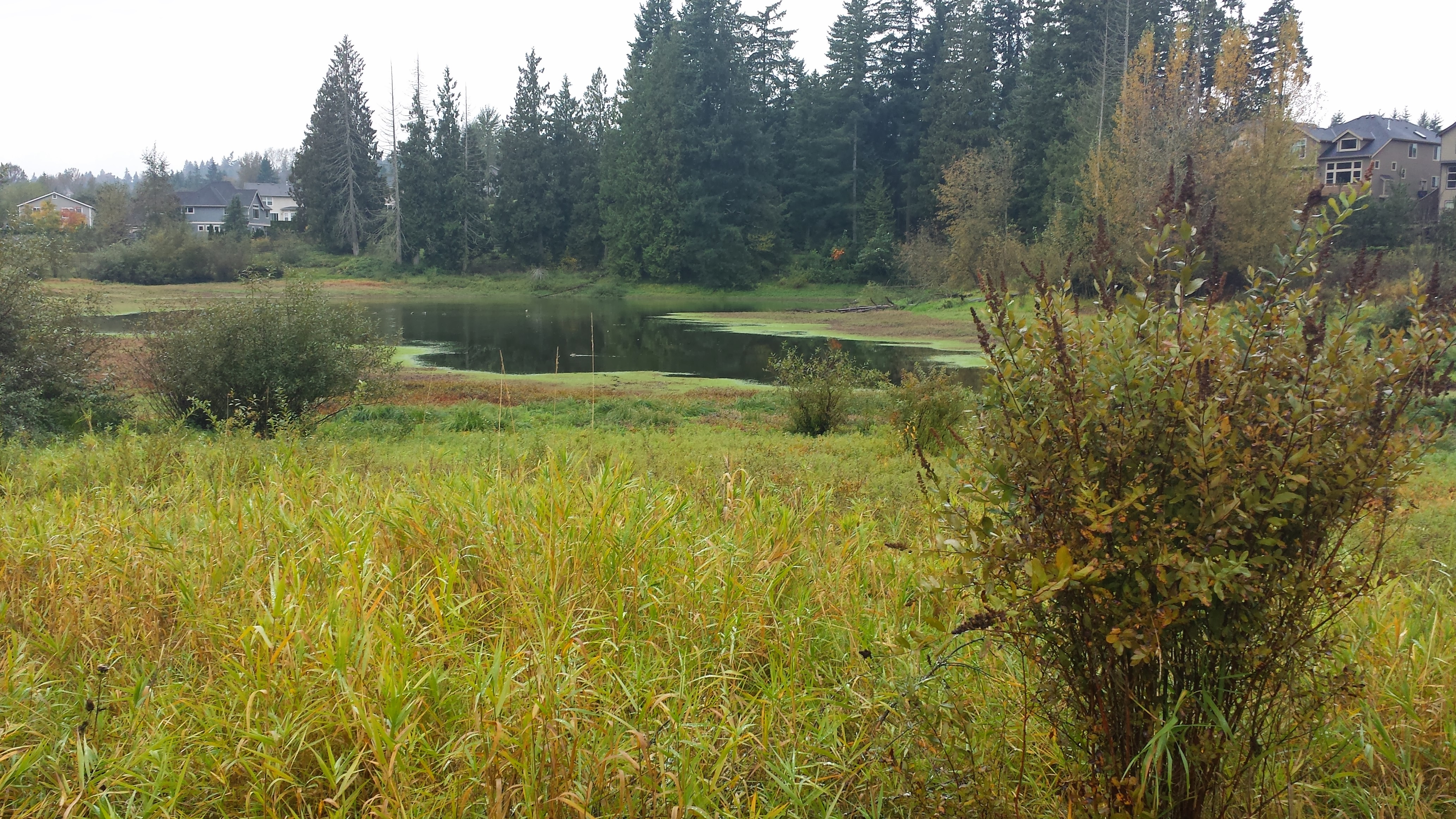Wetlands
Wetlands are highly productive ecosystems that support aquatic and terrestrial species of plants and animals. Wetland areas are seasonally or permanently inundated by surface or groundwater in the upper soil profile and support a plant community adapted to those hydrologic conditions. Wetlands are also referred to as swamps, marshes, and bogs.
Wetlands are identified, delineated, and classified to determine buffer widths. Wetland buffer widths are assigned based on rating category and habitat score. Buffers are designed to protect the functions of wetlands from development, ensuring that their habitats are not adversely affected. Buffers are intended to be fully vegetated with native species so that the wetland and the surrounding area within the buffer can continue to provide habitat and protect water quality.
Applicants have two buffer options under the wetland development standards.
| Buffer Option 1 |
| A standard buffer may be applied without mitigation measure or habitat corridor (as applicable). |
| Buffer Option 2 |
| A reduced mitigated buffer width may be applied when applicable mitigation measures are applied to the land use and a habitat corridor is provided where applicable (see code SMC 21.03.020.V for further details). Additionally, to apply the narrower mitigated buffer width, buffers must be densely vegetated with a native plant community or planted to meet that standard. |

Additionally, Sammamish requires building setbacks from critical area buffers. Setbacks also for routine structure maintenance without disturbing the areas within the buffers.
